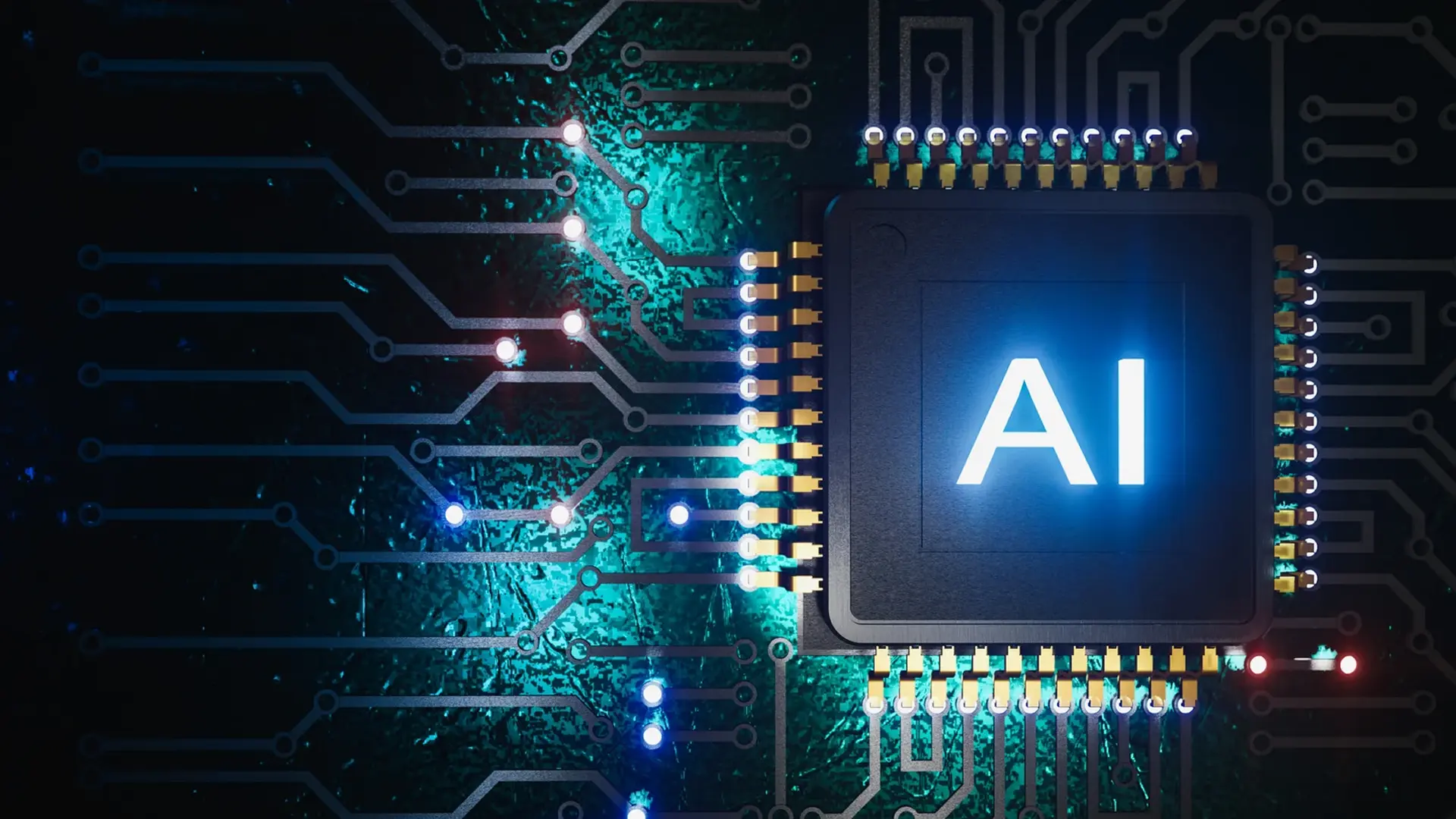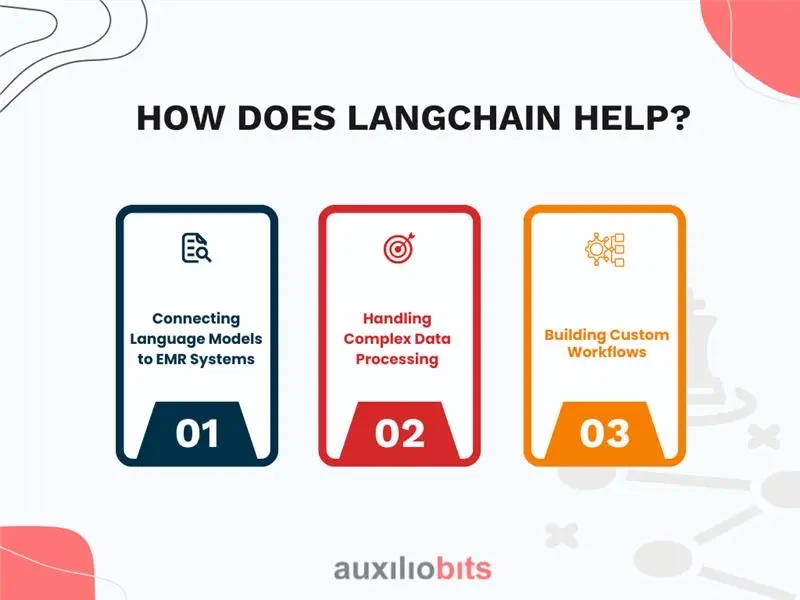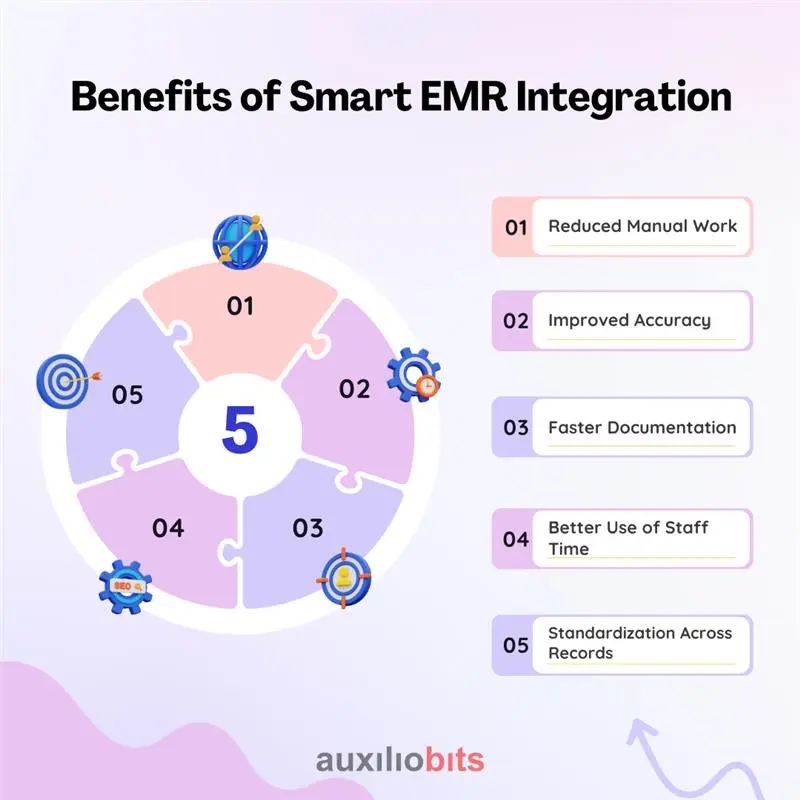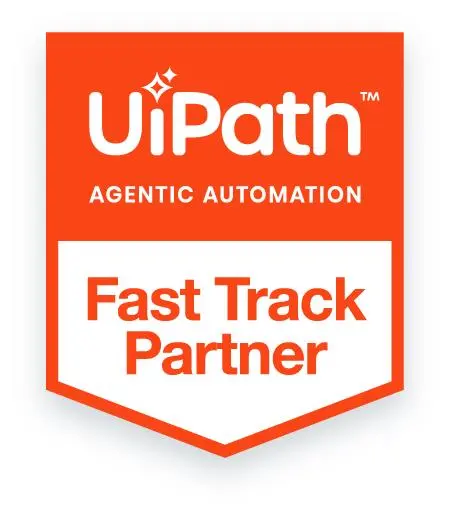
We live in a world where everyone is busy with their schedules. There is much to do if medical experts want to schedule appointments or prioritize patient care. They are under constant pressure to fulfill patient requirements and ensure patients receive the treatment they deserve.
Several healthcare settings depend on electronic medical records (EMRs) to ensure that all the patient details, test results, prescriptions, etc., are stored safely. Doctors can use them to provide proper care and treatment to the patients. Nevertheless, manually entering data into the systems with EMRs is challenging. Healthcare professionals tend to spend so much time, leaving them stressed and tired. This gives rise to mistakes and affects the quality of care a patient gets. Henceforth, many healthcare settings should start utilizing OpenAI and LangChain to ensure things fall into the right place. These outstanding technologies use artificial intelligence to ensure all the data entry procedures are completed without wasting time. From taking notes to maintaining documents and filling in details in the systems, these technologies never disappoint. Additionally, less time is consumed, and fewer or no errors exist.
Also read: Securing AI Agent Communications: Enterprise-Grade Architecture Patterns
What Is EMR, and Why Does Smart Data Entry Matter?
Electronic Medical Records (EMRs) are digital versions of the old paper charts that doctors used to keep for each patient. Instead of writing everything down by hand, healthcare providers use computers to store and manage patient information. EMRs include many details, such as medical history, test results, diagnoses, medications, allergies, treatment plans, etc. This digital system helps doctors, nurses, and other healthcare staff access critical information quickly and share it easily when needed.
However, while EMRs have made healthcare more efficient in many ways, manual data entry remains a significant challenge.
Doctors, nurses, and medical assistants often spend much time typing information into the system. For example, after seeing a patient, a doctor may need to write down the symptoms the patient described, the diagnosis, and the recommended treatment. They may also need to enter lab results, prescriptions, or follow-up instructions.
This process is
- Time-consuming— Healthcare workers are very busy, and every minute spent on data entry takes time away from caring for patients. Instead of focusing entirely on patients, they are often behind a computer screen.
- Error-prone— When people are in a rush or tired, it’s easy to make mistakes. A small typo or missing detail can lead to serious issues, such as giving the wrong medication or misreading a diagnosis.
- Repetitive—Many entries involve repeatedly entering the same type of information, which can be frustrating and lead to burnout.
That’s why smart data entry is becoming more critical in healthcare. Smart data entry means using technology to help enter information more quickly, accurately, and easily. This includes tools that automatically understand voice commands, scan handwritten notes, or extract key details from documents. With smart data entry, much of the work that used to be done manually can now be handled by artificial intelligence (AI) and other digital tools.
By making data entry smarter, we can reduce the burden on healthcare professionals, lower the chance of errors, and free up more time for what matters most—taking care of patients. It’s a win-win for both medical staff and the people they serve.
How does LangChain help?
LangChain is a powerful tool that helps developers build more innovative applications using large language models (LLMs), like those developed by OpenAI. While LLMs are great at understanding and generating human language, they sometimes need help working with real-world systems, like Electronic Medical Records (EMRs). That’s where LangChain comes in.
Think of LangChain as a bridge between advanced AI language models and other software systems. It helps AI tools understand and process text and interact more intelligently and usefully with data, databases, APIs, and workflows.
LangChain plays a key role in automating data entry into EMRs in healthcare. Here’s how it helps:

1. Connecting Language Models to EMR Systems
LangChain makes connecting AI models to EMR software easier using APIs (Application Programming Interfaces). APIs allow different software programs to talk to each other. With LangChain, developers can set up a connection so the language model can send and receive data from the EMR system securely and accurately.
For example, when a doctor finishes a patient visit and dictates notes, LangChain can help the language model understand the speech, convert it into structured data, and then send it directly to the EMR system.
2. Handling Complex Data Processing
Medical conversations and documents are full of detailed information. LangChain helps manage multi-step processes like
- Converting a voice recording of a patient consultation into text
- Extracting key medical details (like symptoms, medications, and diagnoses)
- Structuring that data in the format required by the EMR
These steps must happen in the correct order and with high accuracy. LangChain makes this workflow smoother and more reliable.
3. Building Custom Workflows
Different hospitals and clinics use different EMR systems and have different needs. LangChain makes it easy to create customized workflows that understand specific medical language, extract the correct information, and format it correctly for each EMR.
In short, LangChain acts like a smart middle layer between the AI and the EMR system. It automatically ensures that the correct information goes into the right place in the proper format. This reduces manual work, lowers the risk of errors, and helps healthcare professionals save time and focus more on patients.
What Role Does OpenAI Play?
OpenAI provides advanced language models that can understand and generate human language. These models are trained on a wide range of information and can read, listen to, and respond to text naturally. This ability is incredibly valuable in healthcare, especially when working with Electronic Medical Records (EMRs).
One of the biggest challenges in healthcare is turning unstructured data (like conversations, handwritten notes, or voice recordings) into structured data that fits neatly into EMR systems. This is where OpenAI’s models shine.
1. Understanding Doctor-Patient Conversations
Doctors and patients often have detailed discussions during appointments. These conversations include symptoms, past medical issues, medications, and treatment plans. OpenAI’s language models can listen to or read transcripts of these conversations and understand the medical context. For example, if a patient says they’ve had a fever for three days and are taking antibiotics, the model can recognize that as relevant clinical information.
2. Extracting Key Medical Data
Once the conversation or text is understood, OpenAI’s models can pull out important details like:
- Symptoms (e.g., chest pain, shortness of breath)
- Diagnoses (e.g., pneumonia, diabetes)
- Medications (e.g., dosage and frequency)
- Lab results or test findings
- Follow-up plans or referrals
This information can then be used to fill out the correct fields in an EMR, reducing the need for manual typing.
3. Creating Structured Summaries
OpenAI models can also take long, unstructured notes and summarize them in a clear, organized format. For example, a detailed doctor’s note can be turned into a structured report with sections like “Chief Complaint,” “Assessment,” and “Plan.” This is especially helpful for EMR systems that require standardized input.
Working Together with LangChain
While OpenAI’s language models provide the brainpower to understand and process natural language, LangChain handles the integration and workflow, ensuring the data gets where it needs to go. Together, they create a seamless system that can:
- Listen or read
- Understand and extract
- Format and enter data directly into the EMR
This partnership between OpenAI and LangChain allows healthcare providers to save time, reduce errors, and focus more on patient care by making data entry more intelligent and automated.
Putting It Together: How EMR Integration Works
Now that we understand the roles of LangChain and OpenAI, let’s walk through how they work together to simplify data entry into Electronic Medical Records (EMRs). We’ll break it down step by step using a typical real-world example—a doctor documenting a patient visit.
1. Capture Input
The process begins with data capture. After seeing a patient, a doctor might record notes about the visit using a voice recorder or dictate directly into a medical transcription tool. Some may even write a free-text note in natural language. These notes could include details like the patient’s symptoms, physical exam findings, diagnosis, and treatment plan.
This raw, unstructured input—spoken or typed—forms the starting point for the innovative data entry process.
2. Process Input Using LangChain + OpenAI
Next, this input is sent to a LangChain-powered pipeline. LangChain acts as the orchestration layer, coordinating the entire flow. It passes the input text to an OpenAI language model trained to understand and process natural language in a clinical context.
The AI model analyzes the content and starts to make sense of it, just like a human would. It understands the meaning behind phrases, medical terminology, and the structure of the doctor’s notes.
3. Extract Key Information
Once the input is processed, OpenAI’s model extracts critical clinical data. This includes:
- Patient name and demographics (e.g., age, gender)
- Symptoms (e.g., fever, sore throat, chest pain)
- Medical history (e.g., history of asthma or diabetes)
- Diagnosis (e.g., upper respiratory infection)
- Medications and dosage (e.g., Amoxicillin 500 mg, twice daily)
- Next steps (e.g., follow-up in 1 week, refer to a specialist)
Instead of leaving this information in a block of unstructured text, the model converts it into a structured format, such as JSON or a table, organized by data fields that an EMR system can understand.
4. Connect to the EMR
LangChain now takes this structured data and prepares it to be sent to the EMR system. Every EMR has specific requirements for formatting data and which API endpoints it accepts.
LangChain handles this formatting and connects with the EMR’s API, ensuring that the data goes to the correct places, such as the diagnosis field, medication list, or progress note section.
5. Store and Update Patient Record
Finally, the EMR system receives the structured data and automatically updates the patient’s record. Doctors and staff do not need to enter the information manually.
Within seconds, the full visit summary is recorded in the EMR, appropriately categorized, and ready for future reference.
The Result: Smarter, Faster, and Safer Data Entry
This workflow takes just a few moments, from capturing input to updating the EMR. More importantly, it reduces the chances of human error, saves doctors and nurses valuable time, and allows them to focus more on patient care rather than paperwork.
Combining OpenAI’s robust language understanding with LangChain’s workflow automation and EMR integration gives healthcare providers a seamless, intelligent data entry solution that improves efficiency and accuracy.
Benefits of Smart EMR Integration
Integrating tools like LangChain and OpenAI into Electronic Medical Record (EMR) systems offers many practical benefits for healthcare providers. By automating and streamlining the process of entering patient data, hospitals and clinics can improve both the quality of care and the efficiency of their operations. Below are some of the key advantages:

1. Reduced Manual Work
One of the most immediate benefits of smart EMR integration is the significant reduction in manual data entry. Healthcare professionals spend a large portion of their day typing notes, updating charts, and entering patient details, which is often repetitive and time-consuming.
Much of this task is automated by using AI models from OpenAI to process voice notes or free-text inputs and LangChain to manage the workflow and connect to EMR systems. This helps reduce the burden on doctors, nurses, and administrative staff, freeing them from hours of typing and double-checking forms.
2. Improved Accuracy
Manual data entry is prone to human error. A small typo, missed field, or incorrect medication dosage could affect patient safety. With smart data entry powered by AI, these risks are significantly reduced.
OpenAI’s models can consistently extract and structure clinical information based on context and intent, and LangChain ensures that the data is sent to the right place in the EMR. This leads to fewer mistakes, better record-keeping, and improved trust in the information stored within the system.
3. Faster Documentation
Doctors are under constant pressure to document patient visits quickly. Delays in entering notes can lead to backlogs, increased stress, and missed or forgotten details.
Smart EMR integration speeds up documentation by turning notes or conversations into structured entries in real time or shortly after the interaction. This allows healthcare providers to complete their work more efficiently, keeping records current without compromising quality.
4. Better Use of Staff Time
Every minute a healthcare provider spends on data entry is a minute they aren’t spending with a patient. Innovative EMR tools reduce administrative tasks, allowing medical professionals to focus more on direct patient care, which improves clinical outcomes and patient satisfaction.
For support staff, this means more time can be spent on coordinating care, helping with scheduling, or assisting patients rather than being buried in paperwork.
5. Standardization Across Records
Different doctors often have various ways of writing notes or documenting patient visits. This can lead to inconsistent records that are hard to interpret later. Smart EMR integration ensures the extracted information is structured and formatted consistently across the board.
Applying standard templates and data formats makes searching, analyzing, and sharing patient records easier, which is especially important in team-based or multi-specialty care environments.
Smart EMR integration using LangChain and OpenAI transforms how healthcare data is captured and managed. It saves time, reduces errors, and improves the consistency of patient records—all while giving healthcare workers more time to do what they do best: care for patients.
Conclusion
EMR integration using LangChain and OpenAI is a game-changer for healthcare providers. By enabling smart data entry, this combination of tools helps reduce administrative workload, improve documentation accuracy, and ultimately enhance patient care.
The future of healthcare is intelligent, automated, and efficient. And it starts with better tools for the people who provide care every day.








